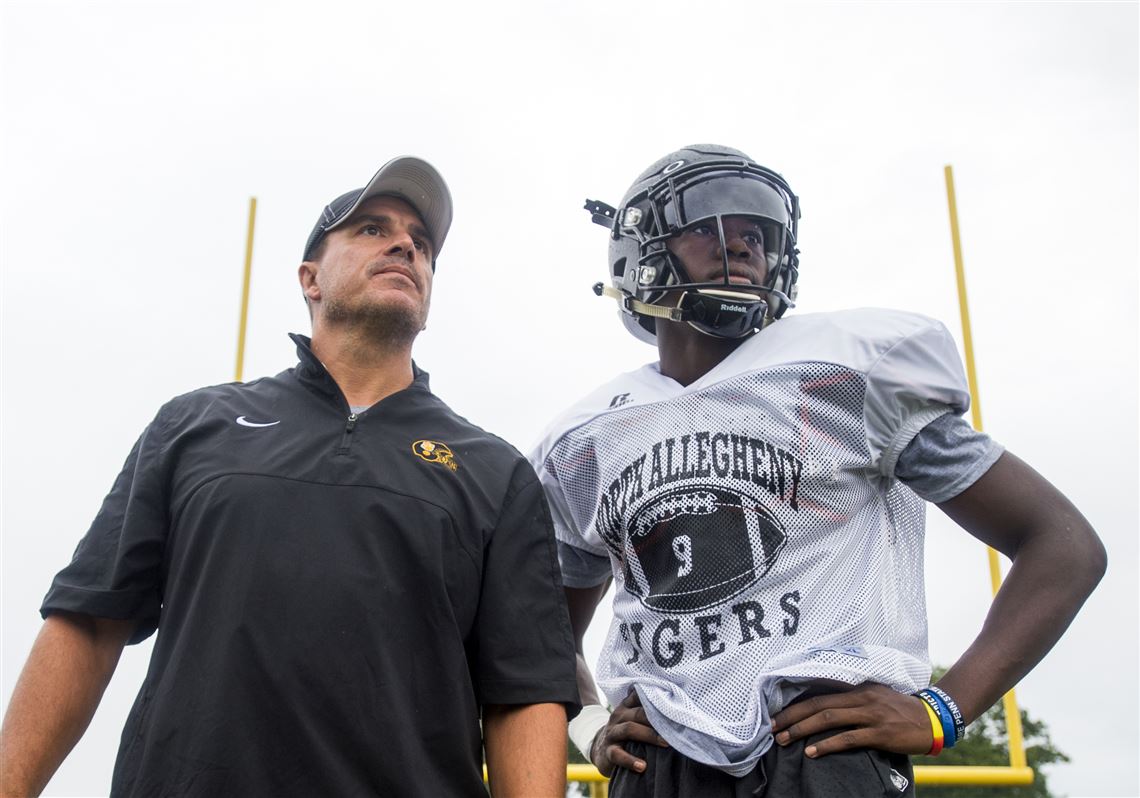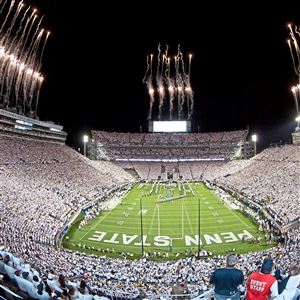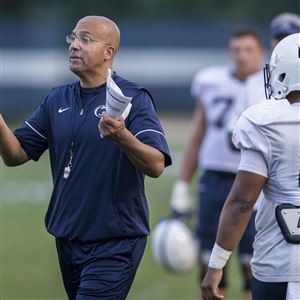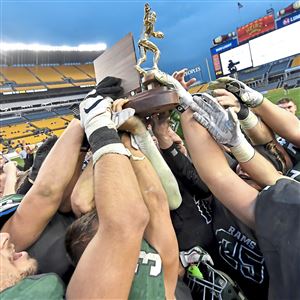Penn State’s recent apathy for Pittsburgh is difficult to accept, but rather easy to understand.
Yes, this is the second-largest city in the state, said to be home to more Penn State alumni per capita than any place outside of Centre County and certainly home to a disproportionate share of all-time program greats, from Richie Lucas to Sean Lee. It’s also the cradle of the Nittany Lions’ greatest historic rivalry. For those reasons, it doesn’t feel right that Penn State snubbed Pittsburgh on its recent coaches tour and ruled out playing Pitt for at least a decade after next season in the process.
The reality, though, is that the local high school talent base really isn’t giving coach James Franklin and Co. much incentive to spend valuable time or scheduling focus here.
According to 247 Sports, the Nittany Lions currently have scholarship offers out to 166 prospects in the recruiting class of 2019. Just one, North Allegheny’s Joey Porter Jr., attends a WPIAL school. Former Gateway standout JaQuan Brisker committed to the class Thursday night, though he’s at Lackawanna Community College on the other side of the state right now.
But even if we count them both as WPIAL players, the area is getting about the same level of staff interest as places like Honolulu, Hawaii, where coaches are after a defensive tackle prospect, and Eugene, Ore., where it has offers out to two players. And there’s a good reason for that.
At the moment, Aliquippa’s Marlin Devonshire is the only WPIAL prospect rated at least four stars or better by Rivals.com. That’s not good enough for a program that’s made a habit of signing four- and five-star rated prospects.
This year isn’t an anomaly either. The region produced just three four-star rated prospects in the 2018 cycle, so only a handful of local players — among them Pine-Richland’s Phil Jurkovec, Belle Vernon’s Blake Zubovic and Aliquippa’s Kwantel Raines — received Penn State offers. All of them opted to play at other schools, leaving Penn State without a WPIAL signee for just the third time since Rivals began tracking classes in the early 2000s.
In the past, such a development might have sunk Penn State’s recruiting efforts for the year. Franklin, though, signed the nation’s fifth-ranked class anyway. He turned to Texas for a pair of defensive backs, he pulled a couple of four stars out of Florida and he dominated pipeline states like Virginia, New Jersey and Maryland.
That’s what it looks like when a program is properly leveraging the visibility of consecutive 11-win seasons to the recruiting trail. It doesn’t need to settle for sub-par in-state talent. And consequently, it doesn’t need to prove its in-state dominance either.
Yes, this is as big a reason for the Pitt rivalry going away as anything else.
At its core, Pitt-Penn State was a recruiting grudge match during its glory days of the 1970s and ’80s. The game was important as much for message it sent to the talent-rich high school fields of Western Pennsylvania as the outcome itself, so Penn State had strong incentive to play it.
That’s not the case right now, even as the first two games in the teams’ current four-year series have included plenty of on-field drama. The winner gets bragging rights, sure, but not the same talent bounty that tended to follow in the past.
All of that makes the rivalry less attractive to a coach like Franklin, who needs to make strong impressions in Maryland and Virginia, pipelines for future opponents like West Virginia and Virginia Tech.
We don’t have to like that. We can lament the matchups we’ll miss out on and argue that a series that’s featured almost 100 meetings deserves better than being tossed to the wayside.
In the end, though, college football always has and probably always will be a game of geography. The WPIAL’s talent base has pushed Pittsburgh to the margins of the map, and until that changes, the consequences can’t be seen as anything other than natural.
Adam Bittner: abittner@post-gazette.com and Twitter @fugimaster24.
First Published: May 21, 2018, 2:41 p.m.
Updated: May 21, 2018, 3:13 p.m.



















